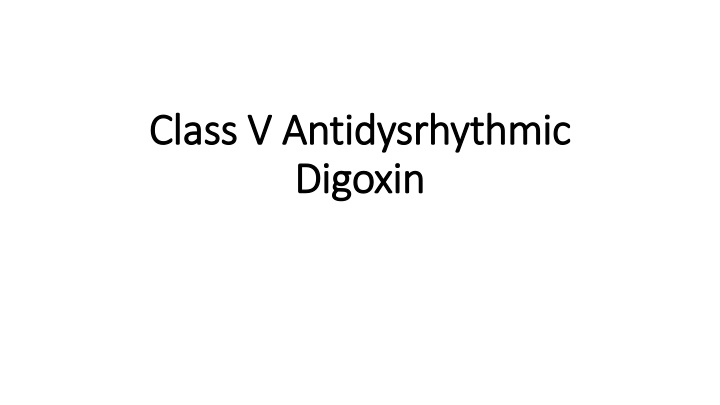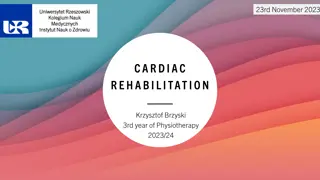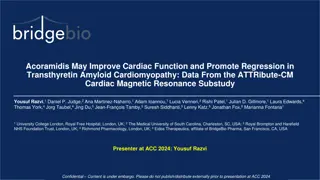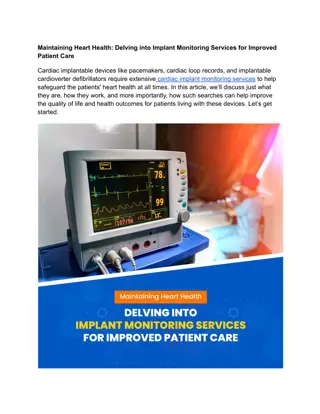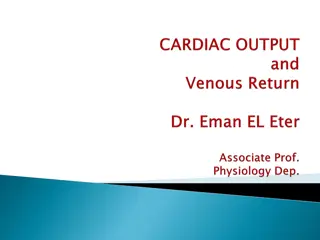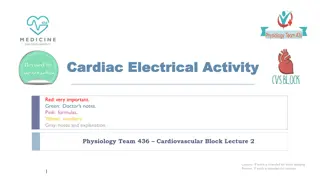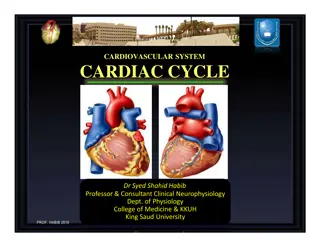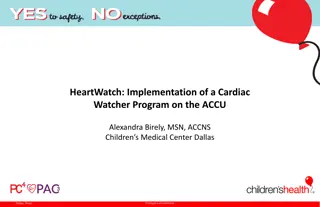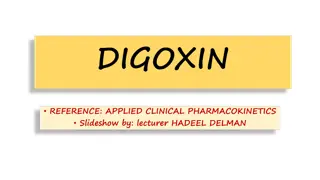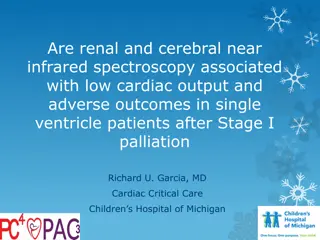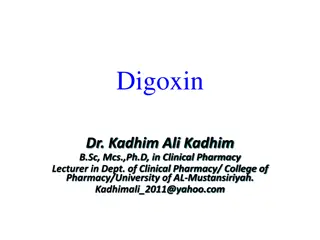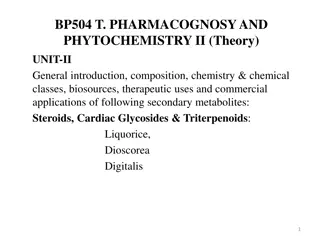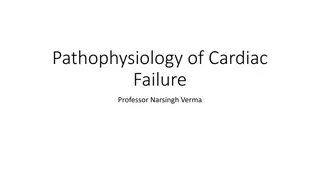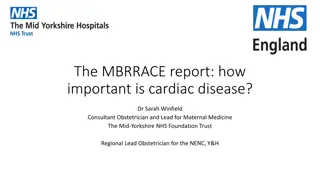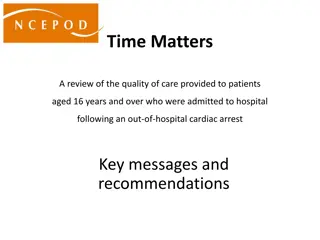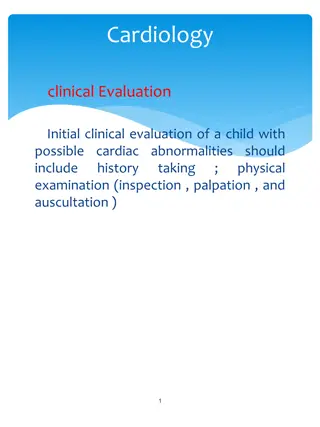Overview of Digoxin and Digitoxin in Cardiac Health
Digoxin and digitoxin are cardiac medications derived from the foxglove plant, commonly used in heart failure and rhythm disturbances. Learn about their mechanisms of action, pharmacokinetics, toxicity risks, and more.
Download Presentation

Please find below an Image/Link to download the presentation.
The content on the website is provided AS IS for your information and personal use only. It may not be sold, licensed, or shared on other websites without obtaining consent from the author.If you encounter any issues during the download, it is possible that the publisher has removed the file from their server.
You are allowed to download the files provided on this website for personal or commercial use, subject to the condition that they are used lawfully. All files are the property of their respective owners.
The content on the website is provided AS IS for your information and personal use only. It may not be sold, licensed, or shared on other websites without obtaining consent from the author.
E N D
Presentation Transcript
Class Class V V A Antidysrhythmic ntidysrhythmic Digoxin Digoxin
Digoxin and digitoxin come from the plant (foxglove). Digitoxin is more toxic than digoxin, which has a shorter t1/2. Digoxin is used in CHF and certain supraventricular rhythm disturbances. Mechanism of action: 1. Digitalis inhibits Na+/K+ ATP-ase. 2. The concentration of intracellular Na+ increase, the concentration gradient across the membrane decrease. 3. Increased Na+ decrease the deriving force for Na+/Ca+2 exchanger, so there is a decease in extrusion of Ca+2 into extracellular space. This result in an increase in intracellular Ca+2, thus increasing myocardial contractility. 4. Increased myocardial contraction leads to: 5. Decrease end diastolic volume thus increase ejection fractions. 6. Improved circulation thus decrease sympathetic activity and decrease PVR. Both lead to a reduction in the heart rate. 7. Digoxin cause also increase in vagal tone so heart rate will be decrease and myocardial O2demand decrease.
Digoxin decreases automaticity and increases maximum diastolic resting memb. Potential in atrial and AV-nodal tissues due to an increase in vagal tone and decrease in sympathetic nervous system activity. Prolongs ERP and diminishes conduction velocity in Purkinje fibers. Prolongs phase 3 of cardiac action potential. Pharmacokinetics: oral bioavailability: 70-80%. t1/2 36-48 hrs (normal renal function) increased 3.5-5 days (renal insufficiency), urinary excretion 60%. Vd4-6 L/Kg. therapeutic level 0.8-1.5 ng/ml. 2ng/ml increase toxicity ; 10ng/ml severe toxicity. Digoxin Toxicity:
5-20% of treated patients may show toxic response, digoxin toxicity could be classified to: 1. Acute toxicity: suicidal attempts, child accidentally ingest high dosesof digoxin. 2. Chronic toxicity: a. Accidental increase in the dose. b. Renal failure. c. Electrolyte disturbance (hypokalaemia). Digoxin Toxicity on the heart: Digoxin mostly acts on the heart, so toxicity maily appears on the heart. All portions of cardiac conduction system are affected . cardiotoxic effect charecterised by arrhythmia (brady-or tachyarrhythmia). No specific arrhythmia is absolutely charecteristic of digitalis poisoning. 1. bradyarrhythmia: due to AV-block and vagal stimulation. mostly found with younger patients who have no cardiac problems. 2. Tachyarrhythmia: due to effect on automaticity of conductive tissue which is either: a. ventricular tachyarrhythmia due to increased phase 4 slop of the action potential. b. Supraventricular tachycardia: older patients are more susceptible to develop tachycardia.
Other Toxic Effects: 1. GIT: N, V, anorexia, effect on CRTZ in the medulla. 2. CNS: Dizziness, headache, fatigue, weakness, visual disturbance (green yellow halos), photophobia, problems in colour perception, neuropsychiatric disturbances. Factors that increase digoxin toxicity (predisposing to toxicity): 1. Electrolyte disturbances a. hypokalaemia: low K+level deoress ATP-ase activity exacerbate digoxin toxicity. K+compete with digoxin on the same receptor site decrease K+ increase digoxin action. Monitor K+level must be monitored diring digoxin administration. b. Hypomagnesaemia: Mg+2 act as a co-factor for ATP-ase activity so decrease Mg+2 depress ATP-ase increase digoxin toxicity.
c. Hypercalcaemia: resulted from increase Ca+2supplement, during treatment of osteoporosis, longbed rest. Diuretics: increase digoxin toxicity because of hypokalaemia and decrease digoxin clearance. 2. Hypothyroidism: decrease clearance of digoxin. increase susceptibilitybof myocardium to digoxin by increased affenity for binding on the myocardium. 3. Quinidine: increase digoxin toxicity by decrease clearance (2-folds)=double concentration of digoxin. 4. Metochlopramide: incease peristalsis decrease toxicity. 5. Kaolin; adsorbent dcrease toxicity. 6. Enteric bacteria: Eubacterium lentum, which convertsdigoxin into in active metabolites and may account for cases of resistance to standard doses of oral digoxin. 7. antibiotics: ex. tetracyclines, erythromycin inhibits Eubacterium increase digoxin. Management of Digoxin Toxicity :
1. 2. 3. 4. 5. removal of non absorbed digoxin (emesis, lavage, MDAC). enhanced elemination with charcoal , cholestyramine, colestipol by interfering with EHC. maintenace of K+ level (insuline and HCO3) control of arrythmia (phenytoin, Atropine, to increase AV-conduction). specific antidote (digoxin immune Fab.). when 4 mg (children) or 10 mg (adult) is ingested, or when dogoxin level 10 ng/ml. To calculate the amount of digoxin Fab. needed for detoxification: a. we have to estimate the amount of digoxin in the blood. b. calculate total body load of digoxin using the following: ??? 5.6 (??.??) 1000 where: SDC=serum digoxin concentration. 5.6 L/kg=Vd digoxin. wt= weight of patient in Kg. c. each vial of antidote contains 40 mg of digoxin antibody fragment, this will bind 0.6 mg of digoxin. Number of vial needed = ????? ???? ???? 0.6 Body load (mg)=
